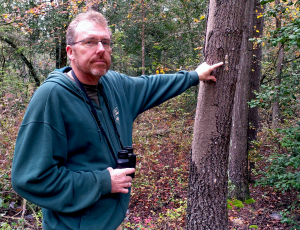
Our forests are continuously threatened by a variety of harmful pests. Early detection is key to keeping these pests under control. You can help us keep our forests healthy by reporting any sign of the pests listed below:
Spongy Moth (formerly Gypsy Moth)
Defoliation in May and June is predicted by over-wintering “fresh” egg mass densities.
Do not count faded and tattered egg masses from the previous year.
| 1-200 egg mass per acre (EM/ac) | Very Light (1-3% of canopy leaves) |
| 201 – 400 EM/ac | Light (4-10%) |
| 401 – 600 EM/ac | Moderate (11-29%) |
| 601 – 800 EM/ac | Severe (30-50%) |
| 801+ EM/ac | Very Severe (> 50%) |
Forest landowners who suspect they may have enough egg masses per acre to warrant a privately contracted spray may call the Forest Health Specialist at (302) 698-4553 for technical assistance.
For all forest health inquiries, including sick tree visits, please email Bill Seybold.
Related Topics: asian longhorned beetle, bacterial leaf scorch, emerald ash borer, forest, Forest Health, forest monitoring, forest pests, forest protection, hypoxylon, sirex wood wasp, southern pine beetle, spongy moth, Spotted Lanternfly, thousand cankers disease